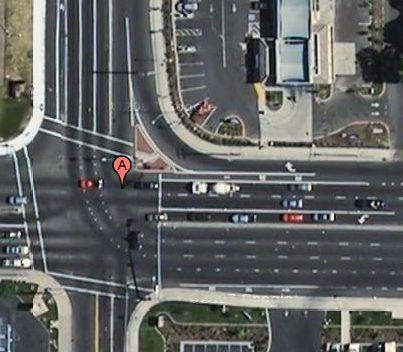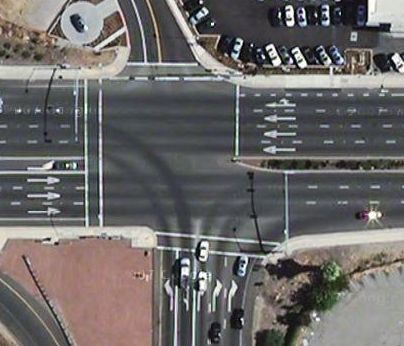|
Cichlidae posted:Unfortunately, this trick only applies to multiple cars, so it won't get you out of your next VASCAR ticket. Sorry! I dunno based on that isolated incident VASCAR seems like the easiest thing in the world to get out of. Another question -- why does the east coast have such a hardon for low speed limits on major roads? I've been on a 6-lane divided road coming out BWI (or maybe Dulles, I forget), and the limit was 25. 4-lane divided roads with a 35 speed limit. 8-lane highways with a 55 speed limit. http://www.youtube.com/watch?v=1B-Ox0ZmVIU Skip to 3:30 to see 4 cars doing the speed limit next to each other down a major highway, although there's an earlier bit where a van clips a car while attempting to pass on the shoulder to get around them. Most of the highways in the midwest are 70 or 75 speed limits. I-25 stays 65 all the way through Albuquerque. People still speed, but it's generally 5-10 over not 15-20 and it's not everyone. It just bugs me that driving on the east coast essentially means you're breaking the law all the time and can be pulled over at any time, even though it *probably* won't happen. King Nothing fucked around with this message at 05:02 on Aug 18, 2009 |
|
|
|

|
| # ? Apr 28, 2024 05:12 |
|
I think Oklahoma has bar-none the worst roads in America. I've heard about the Northeast's problems, but I doubt any road is as bad as I-44 and 244 in Tulsa mainly because they havent been upgraded since they were named US 66. Anyway I think Houston has both the best and worst new roads in America. http://maps.google.com/maps?hl=en&q=Westpark%20Toll%20Road%20houston&sa=N&tab=vl Westpark Toll Road was built on the cheap and it shows. It was built completely within a 50' easement of an old railroad ROW, it has virtually no shoulders (except for a few places where they set speed traps), left handed entrance/exit ramps, nonsensical interchanges with other roads, and before completion of the Katy Freeway expansion notoriously gridlocked due to an extention into Fort Bend County that it was never designed for. Oh yeah from FM 1093 to the Beltway, you cant exit the freeway. Thats about 10 miles going that passes through an area that has a 20 ft wall on one side and the mongol hordes on the other (not joking its the azn carrying uzis ghetto) Good luck if you run out of gas or have a flat tire. IH 10 however is a 16 to 24 lane dream drive.
|
|
|
|
GROADIE SNATCH!! posted:I think Oklahoma has bar-none the worst roads in America. For whatever reason, somebody probably thinks washboarding, potholes, and undercarriage scratches caused by patch jobs on top of patch jobs gives the place character! Instead of actually fixing the road, we seem to pride ourselves in how many squiggly-rear end lines we can paint all over the place: 
|
|
|
|
So, is there actual data that shows that Americans are worse drivers than say, in Europe? I ask because I lived in Japan for a while, which also has high barriers for getting a license, but I swear it didn't make people there any better drivers than I am used to in the US. Furthermore, do you have the data on which regions of the US have better/worse drivers? All I have ever heard is folklore and anecdotes.
|
|
|
|
King Nothing posted:I dunno based on that isolated incident VASCAR seems like the easiest thing in the world to get out of. I have driven on 4-lane freeways with 25 mph speed limits here. Painful. So, why are the limits so low in the East? Many of our roads are quite old, not built to modern standards, and designed for lower speeds than are now common. Road design standards have gotten much more stringent in the 50 years since most of our interstates were built. Wider shoulders, wider curves, interchanges farther apart... the freeways I'm most familiar with were designed for 50-60 mph in some places, and they can't sign the posted speed higher than that without risking some major lawsuits. I've said before that speed limits don't help to calm traffic, and that video demonstrates pretty well how pessimistic the speed limit can actually be, to the point where driving at the posted speed is dangerous and causes congestion. Now, the big question is, what's the solution? We could post a higher limit, but the first time a trucker tries to run a curve posted at 75 and slides off the road because we haven't repaved it in 20 years, the DOT gets sued. We could fix the roads, but that'd require a few trillion bucks. We could enforce the speed limit more stringently, but that really doesn't fix anything. It's not something we can just solve by saying "Oh, you can drive as fast as you want."
|
|
|
|
GROADIE SNATCH!! posted:I think Oklahoma has bar-none the worst roads in America. I've heard about the Northeast's problems, but I doubt any road is as bad as I-44 and 244 in Tulsa mainly because they havent been upgraded since they were named US 66. Aha, I have a revelation for you. That road is what roadgeeks call a Super 2. You see how, about a mile east of the link you posted, the road seems to stick to the north frontage road? That's pretty much a dead giveaway that it was planned to be twinned at some point, sticking a second 2-lane roadway below it and providing 2 lanes in each direction. The weird-looking interchange with 99 and the fact that most of the ramps are on the north side also belies its true nature. In fact, from the satellite photos, it looks like they're already twinning it at 99. When it hits the city, that's a different story. The ROW is so small, I don't know if they'd be able to fit 2 more lanes, especially since the railroad is right there. But for the first part, there is reason to its design, so don't worry! With Texas' cash, it might get upgraded before you know it. (Or it might have been some senator's pet project, in which case it's dead in the water since he left office.) Cichlidae fucked around with this message at 12:23 on Aug 18, 2009 |
|
|
|
Cichlidae, this is the raddest thread. Thanks for taking the time to explain all of this. As others have said this is just about the most informative thing I have ever come across on the internet. If more people contributed like this then perhaps the internet would not be such a cesspool of idiocy. Share the knowledge.
|
|
|
|
quazi posted:For whatever reason, somebody probably thinks washboarding, potholes, and undercarriage scratches caused by patch jobs on top of patch jobs gives the place character! Instead of actually fixing the road, we seem to pride ourselves in how many squiggly-rear end lines we can paint all over the place: Actually the tarred cracks are a sign that the county highway departments do care about maintenance. Some places don't tar cracks which leads to roads disintegrating in the winter.
|
|
|
|
Neutrino posted:Actually the tarred cracks are a sign that the county highway departments do care about maintenance. Some places don't tar cracks which leads to roads disintegrating in the winter. quazi fucked around with this message at 16:34 on Aug 18, 2009 |
|
|
|
Calast posted:And there's this thing, but... well, it's called the Macarthur Maze: Cichlidae posted:Looking at it from this level, that interchange certainly looks up to spec. It doesn't seem to have a technical issue, other than being too close to other interchanges and thus causing weaving, though it could be I'm just not zoomed in enough. Little problems like bad pavement, shoddy guardrails, or low-quality pavement markings and signing can really doom a whole stretch of highway. Also, after that exit, Business 80 drops back down again, and as it passes the light-rail station, the pavement slabs actually cut across the painted lanes at about a 20 degree angle. Very confusing, especially if you're staring into the sun in the evening. ilkhan posted:Thats a big list. Theres a couple double rights and I know of 2 triple lefts in the area. Areas that will last a long time and are built for it mainly.  Sadly, my neighborhood only has several small dumb intersections instead of a giant mess. Sadly, my neighborhood only has several small dumb intersections instead of a giant mess.Here's the triple-left.  Trouble is, that rightmost lane that the opposite side of the street turns onto is actually an on-ramp. So you get people in the right turning lane who just head straight for the ramp and people in the middle lane who can't count trying to plow through any right-lane drivers who don't want to leave town.  The triple-right is just across the overpass, oddly enough.  Aside from never being sure whether it's entirely legal to be making a three-lanes-deep right on red there, my only concern is getting rear-ended by some impatient jerk who can't see the stream of traffic coming over the freeway.
|
|
|
|
Brice posted:I read the first and last few pages of the thread and didn't see this brought up. I'm not sure if you are the correct person to answer this but I figured your probably the best qualified. I live in Virginia, land of no radar detectors allowed and SPEED ENFORCED BY AIRCRAFT signs. I know a guy who actually got clocked by an aircraft and ticketed. He was going 100 on I-64 and saw a state cruiser coming up way in the distance behind him with his lights on and flashing. Pulled over and the cop said that an aircraft tracked him going 100 and called him in. His license was obviously suspended. Frinkahedron fucked around with this message at 19:56 on Aug 18, 2009 |
|
|
|
quazi posted:You are definitely not alone in that assessment! I am nearly convinced that my gas mileage goes up by at least one whole mpg rating whenever I leave the state -- just because of all of the textural 'features' of our roads. Unfortunately, since bridge repair and replacement are the major priority of most state DOTs now (and will be for a couple decades), we've been cutting down on "unnecessary" things like pavement rehabilitation. Sure, it might cost motorists more in tire wear and lost time than it would cost to replace it, but we have to consider the bottom line, and it's not like motorists pay us for saving their tires. Neutrino posted:Actually the tarred cracks are a sign that the county highway departments do care about maintenance. Some places don't tar cracks which leads to roads disintegrating in the winter. I'm not sure how many freeze/thaw cycles happen in Oklahoma, but yes, it does help. In theory, we should be replacing all of our asphalt every 7-10 years, but I'm sure you'll agree that that's just impractical with the current financial constraints. I'm currently working on an R&R job in Newington; the road hasn't been paved since the mid 1970s. That's in Connecticut, too, which has a few hundred freeze/thaw cycles a year, and pretty subpar sub-base conditions to begin with. You can imagine what that road looks like. I still can't complain, though, because we did some Micropave tests on RI roads and found a great number of them rated lower than 20. Ouch. quote:But is there any way to lay down the tar so it isn't bumpy? I didn't notice it back when I drove a Buick sofa-car, but now with a minivan, I doubt I would survive the egg in a colandar test just driving on the interstate. Haha, that was amazing. I love Top Gear. The sealant is normally not something you can feel by driving over it, and the kerf cuts in the asphalt mean that it's supposed to break where we want it to break, which is down the centerline and lane lines, and perpendicularly across the road. Unfortunately, nature doesn't always follow orders, and we get those nice big cracks in the wheelpaths. Oops! Cichlidae fucked around with this message at 21:41 on Aug 18, 2009 |
|
|
|
Samurai Sanders posted:So, is there actual data that shows that Americans are worse drivers than say, in Europe? I ask because I lived in Japan for a while, which also has high barriers for getting a license, but I swear it didn't make people there any better drivers than I am used to in the US. I don't have data on "better drivers," because that's not something that's easily quantifiable. Reaction times are proportional to average age of drivers (something that could soon be a problem in many countries, thanks to the baby boom). Accidents are as much a result of poorly built roads and insufficient enforcement as driver proficiency. The major cause of fatal accidents is drunk driving, which is dependent on local laws and cultural attitudes toward alcohol. As we all know, IQ variations across country lines are minimal; we all start off on a blank slate, so to speak. How could we rate education? There's no international standard for driving "literacy," since there are so many different regulations and standards. An excellent driving class that passes a greater percentage of its students might produce better drivers than a brief class that fails the majority, so selectivity is out. The only thing I can say is, we can always use improvement. It's certainly possible to test the effects of new types of education, using the old types as a control. The more research that's done, the better we get. Ranking countries by driving proficiency isn't very relevant at all in my line of work; only improving what we've already got.
|
|
|
|
Vanagoon posted:Cichlidae, this is the raddest thread. Thanks for taking the time to explain all of this. As others have said this is just about the most informative thing I have ever come across on the internet. If more people contributed like this then perhaps the internet would not be such a cesspool of idiocy. Share the knowledge. Hey, thanks! I'm really eager to help you all be better drivers. Perhaps it's a little selfish, but helping you out makes my job more enjoyable. I was at a point where I found it difficult to take humor in anything road-related, but I have something of a different perspective now that I know other people care, too. Thanks to you, I'll remember to chuckle next time I'm working on that job at Johnson Avenue, Dickerman Road, and Peck Lane. And as always, if there's anything more you'd like to know, please do ask! Even if I don't know, I'll go hunt down the info for you.
|
|
|
|
Frinkahedron posted:I live in Virginia, land of no radar detectors allowed and SPEED ENFORCED BY AIRCRAFT signs. I know a guy who actually got clocked by an aircraft and ticketed. He was going 100 on I-64 and saw a state cruiser coming up way in the distance behind him with his lights on and flashing. Pulled over and the cop said that an aircraft tracked him going 100 and called him in. Now that I know that, those signs will certainly be a deterrent for me! Here's another bit of speeding ticket trivia: in Germany, a radar detector isn't the last word. The measured speed has to be reduced by both the inaccuracy inherent in the detector, and the inaccuracy of your speedometer. All told, you could get a ticket for several kph slower than you were actually going. Don't press your luck, though, because you never know when your speedometer and the radar gun are both fast.
|
|
|
|
FronzelNeekburm posted:The Maze is also the reason I'm a little nervous about putting that many freeways in one place. Sure, they may be safer and have great throughput, but it only takes one idiot cutting off a tanker, and Bay Area traffic grinds to a halt for weeks. Yes, that can be a big issue. We try to keep our expansion joints non-reflective, but our biggest problems are during construction. We cover over the normal stripes with black tape, black paint, or just obliterate them altogether. Obliteration is expensive (and doesn't always do the trick, as our stripes are often embedded in the pavement), and tape peels up easily and becomes a hazard. Black paint is reflective, and, especially at night, looks like it's a legitimate marking, leading cars directly into a Jersey barrier. We're doing research on a new type of black paint that is quite matte, and very easy to remove. We won't have results for several years, but if the feds approve it, construction zones will become a bit safer! quote:And two of them are near me! Yeah. Those stripes on the ground are called "cat tracks" (their freeway equivalents, spaced farther apart, are "elephant tracks"), and they SHOULD help sort out cars in a multi-lane turn. There's only so much, however, you can do once they're already in the "appropriate" lane. France has a special kind of pavement marking called Lignes de Dissuasion, dissuasive lines, that say "You CAN change lanes here, but you probably shouldn't!" Those would go well in this situation, but I'd wager 99.95% of drivers would have no idea what they meant. Now here's a sight: a quad left, and immediately adjacent, a double left with 5 through lanes.  No cat tracks, either. How do you find the correct lane? It's New York! Just honk at people until your problem solves itself.
|
|
|
|
The ostensible purpose of them is clear, but what the hell is up with using those ENORMOUS half-bowling-ball sized lane markers? There's several places in the Dallas area that use these to demarcate / separate left turn lanes from through traffic. They must do horrific damage to any car that hits them at speed, and often start up after maybe one car's length opportunity to actually enter the turn lane. Just seems like an awful price to pay for a little lack of foresight, because really they won't stop you from hitting another car if you merge over late anyway. (failed finding a GMaps link but they're like 12-inch metal hemispherical dealies that stick up out of the road)
|
|
|
|
Stew Man Chew posted:The ostensible purpose of them is clear, but what the hell is up with using those ENORMOUS half-bowling-ball sized lane markers? There's several places in the Dallas area that use these to demarcate / separate left turn lanes from through traffic. They must do horrific damage to any car that hits them at speed, and often start up after maybe one car's length opportunity to actually enter the turn lane. Well, if you haven't hit any so far, then they're a pretty good deterrent, right?  Raised lane markers, as they're called, have a small section in the MUTCD that mostly references how often they should be placed. This gives different states a lot of freedom on how they're used and how big they are. In any case, even if they're replacing a solid line, raised pavement markers shouldn't create any more of a barrier than a mountable (usually 4" high) curb. I can see why Texas would want to use them instead of a curb, as they'd be much cheaper than putting in a channelizing island. However, a solid white line really should be plenty to delineate a left-turn lane. If you're having trouble with people cutting into the lane at the last minute, then you probably don't have adequate signage. This might seem rather obvious, but we don't use those here in the northeast because they'd get scraped up by every plow in Winter. We don't use many islands for the same reason. Maintenance HATES islands, and that's an understatement. Maintenance people would rather take a nutcracker to their teeth, castrate themselves with fingernail clippers, and walk across a football pitch covered in HIV-infected used heroin needles than let us put in islands. Maybe that's why all of our plow drivers are toothless eunuchs with drug problems.
|
|
|
|
Cichlidae posted:Aha, I have a revelation for you. That road is what roadgeeks call a Super 2. You see how, about a mile east of the link you posted, the road seems to stick to the north frontage road? That's pretty much a dead giveaway that it was planned to be twinned at some point, sticking a second 2-lane roadway below it and providing 2 lanes in each direction. The weird-looking interchange with 99 and the fact that most of the ramps are on the north side also belies its true nature. In fact, from the satellite photos, it looks like they're already twinning it at 99. The Westpark Tollway is already 2 lanes in each direction all the way from terminus to terminus. They may have left room on the far west end to expand to 3 or 4 lanes in the future, but it wont make much difference for people using it to get to SH6, BW8 or US59, as the ROW east of SH6 is fully consumed and "acquiring" additional ROW though there is a total non-starter, politically. All in all, the engineers did a pretty good job considering the mandate was build what you can in the existing ROW, or don't build anything at all. Question for you: Do you or Traffic Engineers in general worry that you are playing a key role in creating a better idiot? You point out that your design standards and safety mandates force you into doing things for the least common denominator - but does this not somewhat encourage the general public's utter incompetence behind the wheel, and justify to them their inattention? After all, if it's important, it's the engineer's job to point it out to you. SlapActionJackson fucked around with this message at 23:16 on Aug 18, 2009 |
|
|
|
Great thread Cichlidae. Do you have any good example of "Traffic Engineer porn" - roads that can take a quarter bajillion cars and not slow down, that make you proud of your profession? So much discussion of the worst roads, but nobody talks about the successes!
|
|
|
|
SlapActionJackson posted:The Westpark Tollway is already 2 lanes in each direction all the way from terminus to terminus. They may have left room on the far west end to expand to 3 or 4 lanes in the future, but it wont make much difference for people using it to get to SH6, BW8 or US59, as the ROW east of SH6 is fully consumed and "acquiring" additional ROW though there is a total non-starter, politically. Hmm, the pavement markings weren't too visible in the aerials. Really, with that little ROW, they might've been better off just building a busway or a few rail lines. quote:Question for you: Do you or Traffic Engineers in general worry that you are playing a key role in creating a better idiot? You point out that your design standards and safety mandates force you into doing things for the least common denominator - but does this not somewhat encourage the general public's utter incompetence behind the wheel, and justify to them their inattention? After all, if it's important, it's the engineer's job to point it out to you. I don't think this is the case. While we do provide for the worst possible driver, we also provide some subliminal "optimizations" for better drivers, and those encourage people to think and learn. For example, have you ever driven down a road, one lane in each direction, and the car in front of you decided to turn left? You look to the right and see that the shoulder was widened to 8 feet or so adjacent to the intersection. The white edge line tells you to stay in your lane, but you don't have to. You can pull to the right and pass the turning car. We design bypasses specifically for that purpose, even if not everyone knows how or when to use them. Proper signage isn't a fail-safe or dumbing-down measure, it's there to inform. With or without a sign every mile, the speed limit still exists. Including it lets the driver know how fast to drive. Sure, if we put them 5 or 10 miles apart, drivers would be forces to pay more attention. That's one of the reasons for the naked roads idea. But they'd be paying attention to something not strictly critical to the driving task, as the more pretentious among us call it. Why not make the speed limit well known, and let drivers pay attention to the road instead? Sometimes, though, it becomes rather excessive. I mentioned earlier that I've been asked to replace signs that are no longer valid. Doing so, I feel, unnecessarily detracts from a driver's attention and decreases his trust toward signs as a whole. We have to walk a fine line between doing what's safest (naked roads have been shown to cut accidents and commute times) and performing our due diligence so we don't get sued. Making roads more intuitive and simpler to drive isn't a bad thing. It lets us pay more attention to the heavy congestion and new distractions that have appeared in the last several decades. Perhaps driving itself isn't as mentally taxing as it once was, but that's necessary to keep drivers alive and keep traffic moving. Anyway, it's a really difficult and nuanced question; I hope I've answered it adequately. What I hope I'm getting across isn't that roads are made for the worst drivers, but encourage everyone to drive better and pay attention to the things that matter. It's difficult to provide the right amount of guidance, as too much or too little can both be dangerous. Of course, I'm obviously a little biased, since I work in the field. We often say, "Everyone is a traffic engineer," because everyone uses roads and has some idea of how they want them to work. What do you think?
|
|
|
|
Cool thread - have two family members who work for URS. One's a civil engineer / project manager and one's an environmental specialist - so it's interesting to hear about the traffic engineering side of the equation. Does the business side of your projects cut into the design, or does the general design get handed down from on high and you fill in the details? Do you get involved in the community meetings for your projects?
|
|
|
|
Merrack posted:Great thread Cichlidae. Do you have any good example of "Traffic Engineer porn" - roads that can take a quarter bajillion cars and not slow down, that make you proud of your profession? There are some pretty nice "porn stars" out there. GANGBANG SLUT: Budapest, Hungary has the busiest tram line in the world. It takes hundreds of thousands of passengers per day, the equivalent of dozens of lanes of freeway. Trams come every minute or so, giving them less delay than your average stop light. CUM-GUZZLING GRANNY: The Autobahnnetz comprises the first limited-access road network in the world, and still one of the most extensive. Despite being designed over half a century ago, its roads are still in good shape. The Autobahn also has some of the most advanced tolls in the world. MANTRAIN JUNCTION: Bailey Yard in North Platte, Nebraska, is the biggest railyard in the world. It's got miles and miles and miles of track, and one part of it even vaguely resembles a vagina:  DEEP HOLES: The Chunnel has plenty of records to its name, including being named one of the 7 wonders of the modern world by the ASCE. Original candidates included a bridge and road tunnels, but what's cooler than phallic trains shooting through a 50-mile-long tunnel at 200 mph? Daaaaaamn. It's deep, bro. It's deep.
|
|
|
|
Henry Scorpio posted:Cool thread - have two family members who work for URS. One's a civil engineer / project manager and one's an environmental specialist - so it's interesting to hear about the traffic engineering side of the equation. "Business" has a different meaning in the public sector than in the private. Money's a really important factor, but a project could have a 10,000% ROI and still not get built because some politician is having a bad day. I only see the projects that have made it into the design phase (most die before that point), and about half of the projects we design get "binned," which means they're set aside for that fateful day when we actually have enough money for it. The stimulus meant we had a lot of bin jobs popping back up; I got one from back in the 1990s when we were still using metric. I get involved at many points in the project. If it's a consultant design, I review their plans, specs, and estimates. I get 3 submissions, which means 3 chances to change the project. Consultant design projects can be really easy, but sometimes you'll just get a real lemon and spend 3X as long reviewing it as they spent making it. If it's state or town design, things are a bit more relaxed. I review stuff, go talk with the engineers to get a better feel for the project, and go to some public meetings to answer traffic questions. Sometimes, I make the PS&E myself, which is a little rote but very quick compared to reviewing someone else's mistake-ridden drivel. There are rare projects where Traffic is the prime designer, and I haven't had any of those yet. My bosses have, and they say they're total hell, because traffic engineers don't know anything about project management. I've seen projects designed by other engineering departments, and it's generally a pretty big clusterfuck. Let's hope I don't find myself at the center of one someday.
|
|
|
|
Cichlidae posted:Hmm, the pavement markings weren't too visible in the aerials. Really, with that little ROW, they might've been better off just building a busway or a few rail lines. Actually, they tore up the rail to build the tollway. Which doesn't really bother me since passenger rail in that corridor makes no sense. The exisiting roadway could be converted to busway if Houston's suburbanites would ever deign to ride the bus. quote:
Ah yes, the practical engineer's credo: I did the best I could under the constraints dictated from on high.   I'm actually a bit surprised you guys don't hide more behind sovereign immunity, especially where there are laws on the books that specifically place the burden of safe operation on the motorist. For example, every state in the union has a basic speed law that says you must operate your vehicle at a speed that is safe and reasonable, regardless of the posted speed limit. So if you crash your car because you were going too fast, saying that you were at or below the posted limit isn't a defense to a speeding charge. To me, this would allow posing highway speed limits more in tune with reality and less geared toward what a 1955 perterbilt with 12 bald tires could safely do during a hurricane. I do have my own desires and peeves I'd like to see addressed, but as a user I also have the luxury of bitching about the things I don't like without having to integrate any solution into the laws, standards, and politics that makes you do what you do...
|
|
|
|
I don't know what they're called, but what do you think of the new tolls-but-no-toolbooths? It's like the next step after E-ZPass. All the lanes are high-speed toll lanes, no tollbooths, and you either have a pass (that beeps when you pay a toll) or you use your cell phone to call up and get a day pass for your license plate. I saw this for the first-time in Melbourne and it was like "oh, I don't like this future..." http://en.wikipedia.org/wiki/CityLink#Tolling_system
|
|
|
|
SlapActionJackson posted:Actually, they tore up the rail to build the tollway. Which doesn't really bother me since passenger rail in that corridor makes no sense. The exisiting roadway could be converted to busway if Houston's suburbanites would ever deign to ride the bus. Whether or not the state would lose money in the suit, it doesn't look good for the DOT. I'm not sure about the legal precedents, either; "safe and reasonable" isn't a precise term. If I drive the speed limit and hit a pothole, wrecking my tire, then the speed obviously wasn't safe for the situation: if I'd driven slower, I would have been able to avoid it or done less damage. All the same, I can call up the DOT and get them to reimburse me for repairs. I am not a lawyer, obviously, but that sort of thing seems to imply both admission of responsibility and flexibility of what's considered safe. After all, the family of a deceased driver could always sue the engineer himself for not performing due diligence in his design. If I forget to include a centerline on a busy road, wouldn't you agree that I'm partially at fault for head-on accidents that may occur there, regardless of whether the motorists were driving safely and reasonably? quote:I do have my own desires and peeves I'd like to see addressed, but as a user I also have the luxury of bitching about the things I don't like without having to integrate any solution into the laws, standards, and politics that makes you do what you do... I try my best to understand the user's point of view, and I'll answer any question or complaint that someone has to offer. Motorists certainly have the right to complain about perceived problems, and it's in my best interests to consider them and respond politely. After all, without motorists, I'm out of a job!
|
|
|
|
smackfu posted:I don't know what they're called, but what do you think of the new tolls-but-no-toolbooths? It's like the next step after E-ZPass. All the lanes are high-speed toll lanes, no tollbooths, and you either have a pass (that beeps when you pay a toll) or you use your cell phone to call up and get a day pass for your license plate. Yeah, that's the sort of thing the Autobahn is doing. There are a lot of new technologies just entering the market now, some of them quite innovative. In the Paris Metro, riders can swipe their cell phones at the guichets and pay automatically. Transponders let them use parking garages and tollways from many companies without ever having to roll down a window. They receive a monthly bill showing how much they've been charged. Personally, though, I'm not a big fan of this. I'm an advocate of privacy, despite the tremendous increases in capacity that could occur if every car was being tracked. Additionally, I prefer to pay in cash so that I don't get any surprises on my credit card. I'm sure attitudes will change on this gradually, for better or for worse. Another problem, and probably the biggest barrier to this sort of system in the USA, is the national policy document SAFETEA-LU. Providing a facility that is only accessible to those with credit cards, bank accounts, fixed addresses, or phone numbers could be considered discrimination against lower-income and disadvantaged groups. Finally... Batman Avenue?
|
|
|
|
Cichlidae posted:Yeah, that's the sort of thing the Autobahn is doing. There are a lot of new technologies just entering the market now, some of them quite innovative. In the Paris Metro, riders can swipe their cell phones at the guichets and pay automatically. Transponders let them use parking garages and tollways from many companies without ever having to roll down a window. They receive a monthly bill showing how much they've been charged. California's toll roads are a hybrid of that. Fastrak works on all tolled bridges and toll roads. You just prepay $40 or whatever and it's debited from your Fastrak account balance. The transponders are the same as EZ Pass except you don't have to slow down for it. You can drive through Fastrak lanes at 80mph with no problem (aside from a possible speeding ticket.) If you're not a Fastrak account holder you sit in line at a regular toll booth. There are Fastrak roads that don't have normal toll booths but that's restricted to express lanes only (I-15 in San Diego, SR-91 in Orange County.)
|
|
|
|
Cichlidae posted:Whether or not the state would lose money in the suit, it doesn't look good for the DOT. I'm not sure about the legal precedents, either; "safe and reasonable" isn't a precise term. No, it's not, but the law is full of imprecise terms. That's why it often resorts to a hypothetical "reasonable person" standard to apply, which is explicitly NOT a least-common-denominator approach. And this shows the disconnect between the law and the underlying process. Almost all states now have per se speed limit laws. If the sign says 55, then it is per se unsafe and unreasonable to travel down that road at 56 according to the law. But you've set that limit based on the least able user - the majority can safely go faster, and in ideal conditions, they may be able to go much faster. The discrepancy may be small or inoffensive on low speed urban streets, but not so on many freeways, where the speed limit may be under posted by 20 or 30 MPH from a competent user's perspective. quote:If I drive the speed limit and hit a pothole, wrecking my tire, then the speed obviously wasn't safe for the situation: if I'd driven slower, I would have been able to avoid it or done less damage. All the same, I can call up the DOT and get them to reimburse me for repairs. I am not a lawyer, obviously, but that sort of thing seems to imply both admission of responsibility and flexibility of what's considered safe. You can call up the DOT and ask for repair money because this situation is more about the DOT's duty of care to maintain pothole-free roads. quote:After all, the family of a deceased driver could always sue the engineer himself for not performing due diligence in his design. If I forget to include a centerline on a busy road, wouldn't you agree that I'm partially at fault for head-on accidents that may occur there, regardless of whether the motorists were driving safely and reasonably? Honestly, no unless there were some other deficiency in the design that would lead a reasonable driver into oncoming traffic. E.g. if we're talking a straight 24' wide road, I would expect a reasonable driver to be able to keep to their half. If, however, the road were only 16' wide, then I could see some liability. My last peeve that has not been mentioned in this thread: Please spec 2' minimum of unobstructed shoulder (no rumble strips or reflectors!) on country roads for cyclists. It's enough to ride on while allowing people to pass us more easily - less danger for cyclists, less frustration for motorists.
|
|
|
|
Another question you may not be able to answer: why would a road construction crew ever do their work right in the middle of a very busy street, right in the middle of the Goddamned day? Because it's been going on for months now on my way to work. Why not do the work at night, like they usually do on the highways?
|
|
|
|
Cichlidae posted:This might seem rather obvious, but we don't use those here in the northeast because they'd get scraped up by every plow in Winter. This reminds me... I live in So. Cal, so snowplows aren't typically an issue, but when I do go somewhere in CA where plows are used (mountains) the pavement markers (reflectors, etc.) are placed into a grooved depression that leaves them easily visible, but deep enough that a plow can pass right over. Yet the few times I've visited places where plowing is a regular occurrence (mostly Minnesota), it seems like nobody there has caught on to this at all - they just forgo raised pavement markers altogether. Is it just because countersinking those things costs more?
|
|
|
|
Cichlidae posted:There are some pretty nice "porn stars" out there. Nashville, TN has a railyard-vagina too! http://maps.google.com/maps?f=q&sou...055189&t=h&z=14  I have been to (inside) the Nash-vagina taking my neighbor while I was there to his temp work.
|
|
|
Samurai Sanders posted:Another question you may not be able to answer: why would a road construction crew ever do their work right in the middle of a very busy street, right in the middle of the Goddamned day? Because it's been going on for months now on my way to work. Why not do the work at night, like they usually do on the highways?
|
|
|
|
|
Cichlidae posted:At the very least, it would make a great new venue for circle dances. Aircraft are used, but not that frequently (less frequently lately). Because of the uncertainty of thier meathods they tend to only go after the worst speeders. These are actually used for public safety, because no one makes money on this poo poo. They're used because they're better at getting hard to detect stuff (people with radar detectors for example). They also frequently target non-speeding behvaoir like tailgating or aggressive driving which, frankly, they're better suited for. Winning an aircraft ticket for less than say 10-15mph over should be fairly easy. Cichlidae posted:Now that I know that, those signs will certainly be a deterrent for me! Here's another bit of speeding ticket trivia: in Germany, a radar detector isn't the last word. The measured speed has to be reduced by both the inaccuracy inherent in the detector, and the inaccuracy of your speedometer. All told, you could get a ticket for several kph slower than you were actually going. Don't press your luck, though, because you never know when your speedometer and the radar gun are both fast. Also, that is why everone is giving you the finger when you think you're doing 65 in the "fast" lane (don't call it that). nm fucked around with this message at 11:01 on Aug 19, 2009 |
|
|
|
Cichlidae posted:There are some pretty neat innovations that have come up in the last decade to fight snow. Embedded pavement sensors can detect when the pavement temperature drops below freezing, and notify the plows to come get rid of the snow/ice. Additionally, some states have been experimenting with nozzles that automatically spray anti-freeze solution onto the pavement once it hits freezing. A bit of an older post, but just some info from someone who drove the I-80 Donner Pass every winter weekend for 7 years (commuting snowboard instructor). Most of the upper elevation portion of I-80 is actually concrete already. My observations are that the road just gets beat to death from chain bearing trucks. The right lane is always more beat up than the left lane/s. California also has restrictions regarding chemicals/salt, so I doubt anything will change regarding snow/ice management beyond the standard plowing/sanding the freeway. I don't really consider it that bad. Really the main issue I have is the lack of snow driving skills among the general populace. Always fun to see RWD cars with chains on the front tires.
|
|
|
|
Socket Ryanist posted:Night work = overtime pay This can't be the answer, there are second/third shifts for a reason.
|
|
|
|
Stew Man Chew posted:This can't be the answer, there are second/third shifts for a reason.
|
|
|
|
SlapActionJackson posted:No, it's not, but the law is full of imprecise terms. That's why it often resorts to a hypothetical "reasonable person" standard to apply, which is explicitly NOT a least-common-denominator approach. Alright, I'll trust your superior legal knowledge! All our professors tried to scare us in school by telling us people would sue for anything and everything, so I suppose I'm overly cautious. quote:My last peeve that has not been mentioned in this thread: Please spec 2' minimum of unobstructed shoulder (no rumble strips or reflectors!) on country roads for cyclists. It's enough to ride on while allowing people to pass us more easily - less danger for cyclists, less frustration for motorists. Connecticut state standards require 4-8 foot shoulders on collectors and arterials. Old roads don't need to follow those rules, but anything we build now will have ample room for bikes. Interesting tidbit: it's really 4, 5, 7, or 8-foot shoulders. We never build 6-foot shoulders, because they're just wide enough to look like a parking lane, but your car would protrude into the travelway and cause a hazard.
|
|
|
|

|
| # ? Apr 28, 2024 05:12 |
|
Samurai Sanders posted:Another question you may not be able to answer: why would a road construction crew ever do their work right in the middle of a very busy street, right in the middle of the Goddamned day? Because it's been going on for months now on my way to work. Why not do the work at night, like they usually do on the highways? Night work has a lot of pros and cons. But in order to understand why it's not needed, it's important to know how traffic volumes change throughout the day.  On weekdays, there are generally two available shifts: mid-day, from 9 am to 3 pm, and night, from 6 pm to 6 am. Some types of work (laying concrete, heavy demolition, etc.) require long shifts, so we can bump those up a bit, at the expense of causing congestion during peak hours. Pros of night work: Less volume on the road Less congestion Ability to shut down lesser-used roads Cons of night work: Many jurisdictions have laws in place prohibiting night work near residential areas Big safety detriments due to low visibility Slower work because of difficult lighting and fatigue Moths
|
|
|

























